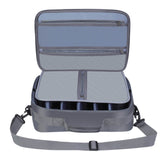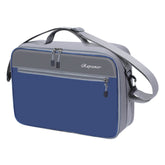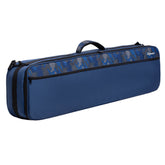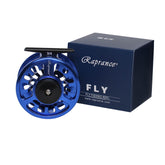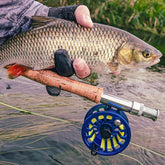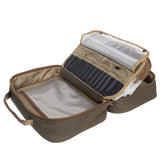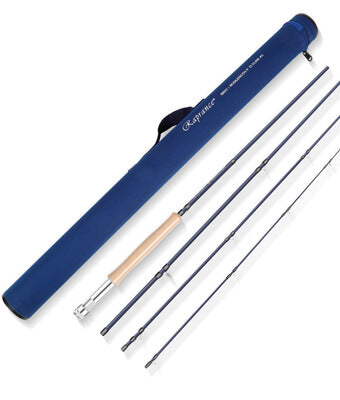Fishing Net: The Ultimate Rubber Landing Net for Bass and Kayak Fishing
Choosing the right fishing net can significantly enhance your angling experience, whether targeting bass from the shore or kayak fishing. A rubber landing net is an essential tool for minimizing harm to fish during catch and release, making it ideal for those who prioritize conservation. When I began using a rubber landing net, I noticed an immediate difference in how easily I could handle the fish while ensuring their safety.

For saltwater fishing, durability becomes crucial. Saltwater environments can present challenges that require a net capable of withstanding harsh conditions. I found that a quality saltwater rubber landing net not only lasts longer but also makes the process of landing larger catches more efficient.
When kayak fishing, space is limited, and a lightweight, compact landing net is a must. I prefer using a rubber landing net designed specifically for kayak fishing since it allows for easy maneuverability and quick access. This combination of features ensures I can enjoy my time on the water while effectively managing my catch.
Fishing Nets Overview
Fishing nets have a rich history and serve various purposes, catering to different fishing techniques and environments. Understanding their evolution and types can enhance my fishing experience and optimize my catch-and-release practices.
History and Evolution
Fishing nets date back thousands of years, with evidence suggesting their use by ancient civilizations. Early nets were crafted from natural materials like plant fibers and animal sinew.
As technology advanced, so did net construction, leading to the introduction of synthetic materials. These materials, such as nylon and polyester, offered greater durability and resistance to saltwater and wear.
The design also evolved, with different shapes and sizes tailored for specific fish species and fishing methods. Modern innovations include features like rubber coatings, which help prevent fish injuries and encourage catch-and-release practices.
Types and Purposes
There are several types of fishing nets, each designed for specific applications and environments.
-
Landing Nets: Used to help anglers secure fish after catching them. They come in various materials, including rubber for gentler handling.
-
Casting Nets: These are typically circular nets thrown by hand to capture bait fish or larger species.
-
Gill Nets: Designed to entangle fish by their gills, often used commercially for various species.
-
Trammel Nets: Multi-layer nets used to trap fish by catching them between layers.
-
Throw Nets: Circular nets that can be thrown to catch fish in a specific area, popular in shallow waters.
The choice of net depends on factors like fishing type, target species, and environmental conditions.
Rubber Landing Nets for Angling
Rubber landing nets are essential tools for anglers looking to improve their fishing experience. They provide distinct advantages over traditional mesh nets and can significantly enhance catch-and-release practices.
Advantages of Rubber Nets
Rubber landing nets offer several key benefits for anglers. First, the smooth surface of rubber minimizes damage to fish scales and fins, which is critical for catch-and-release practices. This helps ensure the fish can survive after being released back into the water.
Additionally, rubber nets are typically more durable and resistant to wear compared to their mesh counterparts. They don't absorb water, making them lighter and easier to handle. Moreover, rubber nets are less likely to snag on underwater obstacles, reducing the chances of losing a catch.
Selecting a Rubber Landing Net
When choosing a rubber landing net, consider the type of fishing you'll be doing. For example, a small net may work well for freshwater fishing, while larger models are better suited for saltwater or larger species.
It's important to evaluate the net's handle length and material. A longer handle can provide better reach from a kayak or shore. Look for a lightweight yet sturdy handle, often made from aluminum or fiberglass. Finally, check the net's mesh size; a larger mesh may allow for easier removal but can also be less protective for fish, while smaller mesh is gentler but heavier.
Specialized Rubber Landing Nets
Rubber landing nets come in specialized designs tailored for various fishing environments. Each type serves a unique purpose, enhancing the fishing experience while ensuring fish safety.
Kayak Fishing Considerations
When choosing a rubber landing net for kayak fishing, I prioritize lightweight and compact options. A net should easily stow away in my kayak without taking too much space.
Consider nets with a folding handle or telescoping features for convenience. Opting for nets with a wider opening makes it easier to land fish quickly and efficiently, especially in smaller confined spaces.
The rubber mesh material helps reduce fish slime loss, which is crucial for catch-and-release practices. I also look for non-absorbent nets that can handle saltwater when fishing in coastal areas.
Saltwater Fishing Requirements
For saltwater fishing, durability is key. I select rubber landing nets designed to resist corrosion from salt, using materials like aluminum or stainless steel for the frame.
The net itself should feature a heavier gauge rubber mesh, ensuring it can withstand larger fish. The deeper net design helps retain fish during landing while reducing the chance of escape.
Using a UV-resistant coating on the net also adds longevity. Features such as a nonslip handle can provide a better grip when battling larger fish in turbulent waters.
Catch and Release Techniques
Proper catch-and-release techniques are essential to promoting fish conservation. I choose rubber landing nets that minimize injury to fish, ensuring they remain unharmed during the retrieval process.
Soft rubber mesh is less likely to remove protective slime from fish. The design should allow for quick and easy release, minimizing the time the fish are out of the water.
I also ensure my net is appropriately sized for the species I target. This consideration helps to avoid unnecessary stress on the fish, improving their chances of survival after release.

